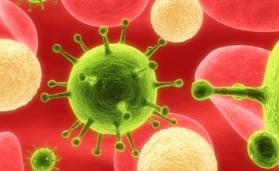WHAT HAPPENS WHEN TISSUE IS INJURED?

When injured the surrounding blood vessels of the area are damaged and can not deliver oxygen and nutrients or remove any waste products. Due to this damage the blood and other fluids seep into the space around the injured muscles, causing swelling, bruising, and pain.
Applying ice lowers the temperature of the damaged tissue and constricts the blood vessels. The application of cold triggers a "sponge effect" - flushing the waste products out of the injured vessels, hence blocking further accumulation of fluids. After the ICE is removed and normal body temperature returns, fresh blood and oxygen can enter to promote healing.
ABOUT ICE
ICE aids in reducing damage and slows down nerve impulses, which also decreases pain. Use ice/when an acute injury occurs, or when signs of inflammation are present: sharp or intense pain with or without swelling. Check with your doctor before using ice or heat if: you have circulatory problems or decreased skin sensitivity due to nerve damage (i.e. after chemo therapy, diabetes...)
ABOUT HEAT
When you have experienced a trauma, or have injured yourself, it is best to avoid using heat for at least 48 hours. Chronic injuries, stiffness or mild soreness may benefit from heat application (hot packs or heating pads).
HOW TO USE ICE? (acute and chronic injuries)
- Use gel packs, prepare crashed ice in a ziplac bag with some water, or use a bag of frozen peas).
- Place a thin layer of cloth/paper towel between the skin and ice to prevent skin damage, frostbite.
- You may lightly massage the injured area with ice or leave it on one spot
- Keep your iced body part elevated (above the heart level)
- Apply ICE for only about 15 minutes at a time
- Use ice as often as you can in the first 48 hours to minimize swelling but allow the skin over the iced area return to normal sensation and temperature 37°C before re-applying the ice pack (allow approx. 1 hour in-between icing).
ICE for overuse injuries in athletes:
Athletic activities may irritate a chronic injury. Common overuse injuries occur in the heels and knees with tears in the tissue where tendons attach to the leg bone or the heel bone. Proper warm up before exercising and cool down with the combination of efficient stretching may reduce the occurance of inflammation/irritation of overuse injuries. The application of ICE can also control and reduce inflammation! Only use ice after activity never before exercising! Use ICE with the same cautions as in the case of acute injuries.
HOW to use heat?
- Use heating pads for about 20 minutes
- Do not fall asleep with heating pads
- Hot-wet towels can substitute for heating pads, but caution should be taken to avoid burning the surface of the skin
- Take a nice bath with epson or sea salt after work or exercising
- Use hot and cold therapy to improve circulation
- Check with your doctor before using ice or heat if: you have circulatory problems or decreased skin sensitivity due to nerve damage (i.e. after chemo therapy, diabetes...)
![]() Visit a doctor when you experience:
Visit a doctor when you experience:
- profuse swelling and bruising
- intermittent/sharp pain
- can’t put pressure on without pain
- when not sure if fractured, or seriously injured
WHAT HAPPENS TO THE INJURED TISSUE AFTER THE ACUTE STAGE?
 After the acute stage, a muscle that has been injured begins the initial repair process and creates a "patch" of random scar tissue fibers. The random alignment of these new fibers becomes a "weak link" in your muscle, leaving it highly susceptible to re-injury.
After the acute stage, a muscle that has been injured begins the initial repair process and creates a "patch" of random scar tissue fibers. The random alignment of these new fibers becomes a "weak link" in your muscle, leaving it highly susceptible to re-injury.
Even a small muscular injury can lead to a chronic pain pattern which persists for months or even years, because the nervous "system stays on alert," waiting for the scar tissue to heal completely and become aligned with the surrounding muscle tissue. For an injured muscle to regain maximum strength and flexibility, the scar tissue needs to become aligned and integrated with the muscle fibers.
Rehabilitation with Massage and Stretch Therapy - A natural form of healing
The combination of Massage and Therapeutic Stretching exercises remodel scar tissue and assist in mental preparation for regular daily activities and exercising. Massage and Stretch Therapy improves circulation and lymphatic flow, assists in removal of waste products such as toxins and lactic acids.
We offer Mobile Massage and Stretch Therapy as rehabilitation! Request an appointment today!
